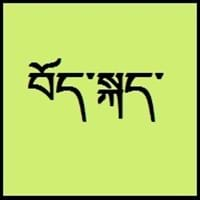Countries
Andorra, Balearic Islands, Catalonia, Latin Union, Spain, Valencian Community
China, Nepal
National Language
Andorra, France, Italy, Spain
Nepal, Tibet
Second Language
Spain
Not spoken in any of the countries
Speaking Continents
Europe
Asia
Minority Language
Aragon, France, Italy, Spain
China, India, Nepal
Regulated By
Institut d'Estudis Catalans, Acadèmia Valenciana de la Llengua, National Languages Committee
Committee for the Standardisation of the Tibetan Language
Interesting Facts
- Catalan is 6th most largely spoken Romance language.
- Catalan went through a golden age in low middle ages, reaching a peak of maturity and cultural richness.
- Tibetan dialects vary alot, so it's difficult for tibetans to understand each other if they are not from same area.
- Tibetan is tonal with six tones in all: short low, long low, high falling, low falling, short high, long high.
Similar To
Spanish Language, Occitan Language, Italian Language, French Language
Not Available
Derived From
Latin
Not Available
Alphabets in
Catalan-Alpahabets.jpg#200
Tibetan-Alphabets.jpg#200
Scripts
Latin
Tibetan alphabet, Tibetan Braille
Writing Direction
Left-To-Right, Horizontal
Left-To-Right, Horizontal
Hello
Hola
བཀྲ་ཤིས་བདེ་ལེགས། (tashi delek)
Thank You
Gràcies
ཐུགས་རྗེ་ཆེ་། (tujay-chay)
How Are You?
Com estàs?
ཁྱེད་རང་སྐུ་གཇུགས་བདེ་པོ་ཡིན་པས།
(kayrang kusu debo yimbay?)
Good Night
Bona nit
གཟིམ་ལཇག་གནང་དགོས་། (sim-jah nahng-go)
Good Evening
Bona nit
དགོང་དྲོ་བདེ་ལེགས།
Good Afternoon
Bona tarda
ཉིན་གུང་བདེ་ལེགས།
Good Morning
Bon dia
སྔ་དྲོ་བདེ་ལེགས། (nga-to delek)
Please
Sisplau
thu-je zig / ku-chee.
Sorry
Perdó!
ཀོང་དགས་། (gawn-da)
Bye
Adéu
ག་ལེར་ཕེབས་། (kha-leh phe)
I Love You
T'estimo
ང་ཁྱེད་རང་ལ་དགའ་པོ་ཡོད་ (nga kayrâng-la gawpo yö)
Excuse Me
Dispensi!
དགོངས་དག བཟོད་དུ་གསོལ། ཐུགས་རྗེ་གཟིགས།
Dialect 1
Caló
Central Tibetan
Where They Speak
France, Portugal, Spain
China, India, Nepal
Dialect 2
Valencian
Khams Tibetan
Where They Speak
Spain
Bhutan, China
Dialect 3
Ribagorçan
Amdo Tibetan
Where They Speak
Spain
China
How Many People Speak
Not Available
Speaking Population
Not Available
Not Available
Second Language Speakers
Not Available
Native Name
català
བོད་སྐད་ (pö-gay)
Alternative Names
Català, Catalán, Catalan-Valencian-Balear, Catalonian, Valencian
Bhotia, Dbus, Dbusgtsang, Phoke, Tibetan, U, Wei, Weizang, Zang
French Name
catalan; valencien
tibétain
German Name
Katalanisch
Tibetisch
Pronunciation
[kətəˈɫa] (EC) ~ [kataˈɫa] (WC)
Not Available
Ethnicity
Catalan people
tibetan people
Language Family
Indo-European Family
Sino-Tibetan Family
Subgroup
Romance
Tibeto-Burman
Branch
Not Available
Not Available
Early Forms
Old Catalan
Old Tibetan, Classical Tibetan
Standard Forms
Standard Catalan, Standard Valencian
Standard Tibetan
Signed Forms
Signed Catalan
Tibetan Sign Language
Scope
Individual
Not Available
ISO 639 6
Not Available
Not Available
Glottocode
stan1289
tibe1272
Linguasphere
51-AAA-e
No data Available
Language Type
Living
Not Available
Language Linguistic Typology
Subject-Verb-Object
Not Available
Language Morphological Typology
Not Available
Not Available
Catalan and Tibetan Greetings
People around the world use different languages to interact with each other. Even if we cannot communicate fluently in any language, it will always be beneficial to know about some of the common greetings or phrases from that language. This is where Catalan and Tibetan greetings helps you to understand basic phrases in Catalan and Tibetan language. Catalan word for "Hello" is Hola or Tibetan word for "Thank You" is ཐུགས་རྗེ་ཆེ་། (tujay-chay). Find more of such common Catalan Greetings and Tibetan Greetings. These greetings will help you to be more confident when conversing with natives that speak these languages.
Catalan vs Tibetan Difficulty
The Catalan vs Tibetan difficulty level basically depends on the number of Catalan Alphabets and Tibetan Alphabets. Also the number of vowels and consonants in the language plays an important role in deciding the difficulty level of that language. The important points to be considered when we compare Catalan and Tibetan are the origin, speaking countries, language family, different greetings, speaking population of these languages. Want to know in Catalan and Tibetan, which language is harder to learn? Time required to learn Catalan is 24 weeks while to learn Tibetan time required is 24 weeks.





